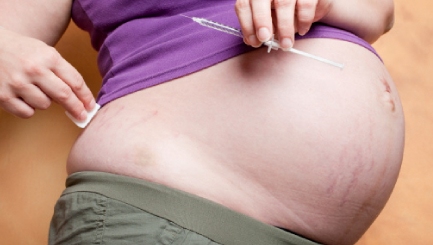How Blood Sugar Monitoring Works with Gestational Diabetes
 Keeping your blood sugar levels under control is one of the most important aspects of self-care when you have gestational diabetes, as this can help you look after your wellness in terms of making the right decisions about diet and exercise and help your doctor determine whether it will be necessary for you to start taking insulin, and this will ensure the wellbeing of you and your developing baby.
Keeping your blood sugar levels under control is one of the most important aspects of self-care when you have gestational diabetes, as this can help you look after your wellness in terms of making the right decisions about diet and exercise and help your doctor determine whether it will be necessary for you to start taking insulin, and this will ensure the wellbeing of you and your developing baby.
How does blood sugar monitoring work? Your body turns food into glucose, which gets absorbed by your cells and, with the help of insulin, turned into energy. However, having gestational diabetes means that your body does not make and use insulin appropriately, so your blood sugar rises and you know that your cells are not absorbing the energy they need from your blood.
Monitoring your blood sugar can inform your diet and exercise choices, as checking your blood sugar before and after eating or exercising can show you how your body uses the food you eat. You might see that carbohydrates, for example, increase your higher blood sugar levels, whilst other foods like vegetables and whole grains lower it. Your level of physical activity also plays a part in your blood sugar, and so, with all these changing factors involved, monitoring your blood sugar takes the guesswork out of managing it. Your doctor will help you determine how often you should test your blood sugar, but this commonly falls between one and four times a day.
So how do you do it? There are various systems available, that vary in cost, size, and speed, but the basic components are the same. Firstly, you use a lancet or needle to get a drop of blood, commonly from your fingertip, to be analysed. Remember you should use a new needle each time and dispose of it properly. Then the glucose meter analyses the sugar, showing you the result in number form on a small screen. Also, some systems involve dropping the blood onto a special strip of paper, which you then inserted into the glucose meter, though for others you transfer the blood droplet goes directly onto the meter. You can get your systems from pharmacies and medical supply stores, and a doctor or diabetes educator can show you how it works and how to interpret the results, so it’s wise to try it first with a professional, as you can ask all the questions you have.


Comments are closed.